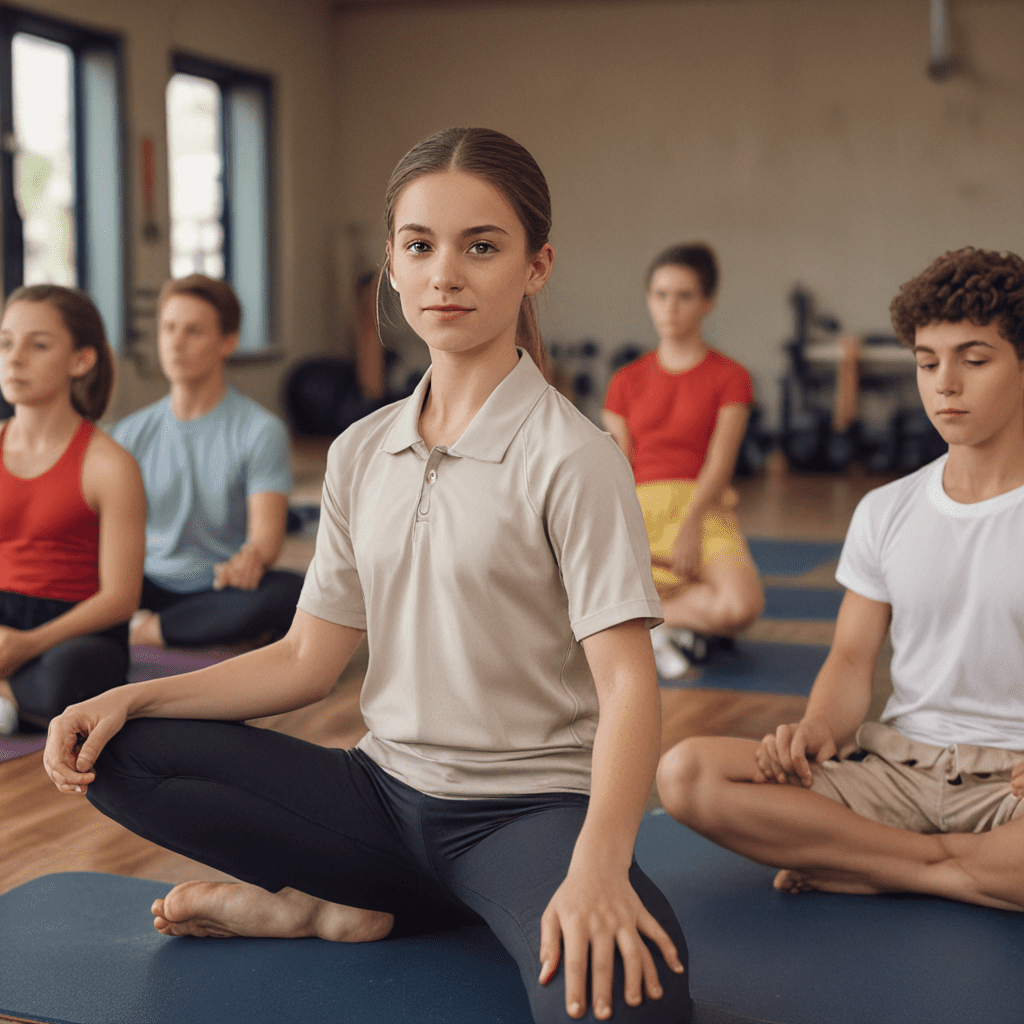
Teaching Kids About the Importance of Relaxation Techniques in Exercise
Introduction
For kids and adolescents engaging in physical exercise, it is paramount to instill an understanding of the significance of incorporating relaxation techniques into their exercise routines. By integrating relaxation methods, young individuals can reap various benefits that enhance not only their performance but also their overall well-being. This article aims to provide insights into the advantages of relaxation techniques in exercise, their different types, effective ways to incorporate them into exercise regimens, and their long-term benefits. Understanding the importance of relaxation can empower children and young athletes to maximize their exercise experiences and foster lifelong habits of healthy physical activity.
Benefits of Relaxation Techniques
- Reduced Muscle Tension: Exercise can lead to muscle tension and soreness. Relaxation techniques promote relaxation of muscles, aiding in recovery and reducing discomfort.
- Improved Flexibility: Incorporating relaxation into exercise enhances flexibility by promoting muscle relaxation and facilitating increased range of motion.
- Enhanced Performance: Reduced muscle tension and improved flexibility contribute to improved performance in various physical activities.
- Reduced Stress and Anxiety: Exercise can induce stress and anxiety, especially in competitive settings. Relaxation techniques help manage stress levels, reducing anxiety and promoting a sense of calm.
- Improved Focus and Concentration: Relaxation promotes mental clarity and focus, aiding in concentration and optimal performance during exercise.
6. Tips for Parents and Coaches
Parents and coaches play a vital role in encouraging children to embrace relaxation techniques. Here are some helpful tips:
- Introduce relaxation techniques early on: Introduce children to relaxation methods like deep breathing or mindfulness during playtime or physical activity.
- Make it enjoyable: Present relaxation as a fun and rewarding activity rather than a chore.
- Practice together: Engage in relaxation techniques alongside children, demonstrating their importance and benefits firsthand.
- Provide support and encouragement: Offer positive reinforcement and support as children incorporate relaxation into their exercise routines.
- Collaborate with other professionals: If needed, consult with healthcare professionals, therapists, or certified fitness instructors for guidance on appropriate relaxation techniques.
7. Overcoming Resistance and Obstacles
Children may initially resist relaxation techniques due to various reasons, such as misconceptions, boredom, or lack of understanding. To overcome resistance:
- Educate and explain: Explain the benefits and importance of relaxation techniques in simple and engaging terms.
- Offer variety: Introduce different relaxation techniques to cater to various preferences and interests.
- Set realistic goals: Encourage children to start with short, manageable relaxation sessions and gradually increase the duration.
- Create a positive environment: Make relaxation a positive and enjoyable experience by incorporating calming music, scents, or visual aids.
- Be patient and persistent: It takes time for children to adapt and appreciate the benefits of relaxation. Provide consistent support and encouragement.
8. The Role of Technology in Relaxation Techniques
Technology can enhance and support the practice of relaxation techniques in exercise:
- Guided relaxation apps: Mobile applications offer guided relaxation sessions with instructions, calming music, and visualizations.
- Wearable fitness trackers: Some fitness trackers monitor stress levels and provide relaxation exercises based on data collected.
- Virtual reality experiences: Immersive VR experiences can create calming environments for relaxation and mindfulness.
- Educational videos and resources: Online platforms provide educational videos and resources on various relaxation techniques.
- Mindfulness and meditation apps: Apps designed for mindfulness and meditation offer guided practices and reminders to incorporate relaxation into daily routines.
9. Long-Term Benefits of Relaxation in Exercise
Incorporating relaxation techniques into exercise has long-term benefits that extend beyond physical performance:
- Reduced risk of exercise-related injuries: Relaxation techniques promote muscle relaxation and flexibility, reducing the risk of strains, sprains, and other injuries.
- Improved recovery time: Relaxation aids in muscle recovery after exercise, reducing muscle soreness and fatigue.
- Enhanced emotional regulation: Regular relaxation practices promote emotional well-being, helping children manage stress, anxiety, and improve mood.
- Increased self-awareness: Relaxation techniques encourage mindfulness and self-awareness, fostering a deeper understanding of the body and mind.
- Lifelong healthy habits: Instilling the importance of relaxation in exercise sets the foundation for lifelong healthy habits, promoting overall physical and mental well-being.
10. Conclusion
Teaching kids the importance of relaxation techniques in exercise is crucial for their physical performance, mental well-being, and long-term health. By incorporating relaxation into exercise regimens, children can reduce muscle tension, enhance flexibility, improve performance, and manage stress. Parents, coaches, and educators can play a vital role in introducing, encouraging, and supporting the practice of relaxation techniques among children. By providing guidance, overcoming resistance, and leveraging technology, we can empower future generations to reap the myriad benefits of relaxation in exercise, fostering their physical, emotional, and mental well-being.
Frequently Asked Questions (FAQs)
Q: Are relaxation techniques suitable for all kids?
A: Relaxation techniques are generally suitable for all kids, but it's essential to introduce them gradually and adapt them to individual needs and preferences.
Q: How often should kids practice relaxation techniques?
A: Regular practice is key. Encourage kids to incorporate relaxation techniques into their exercise routines and set aside time for daily relaxation sessions.
Q: Can relaxation techniques help kids sleep better?
A: Yes, relaxation techniques like deep breathing and meditation can promote relaxation and improve sleep quality.
Q: Are there any contraindications for relaxation techniques?
A: Relaxation techniques are generally safe, but consult with a healthcare professional if a child has any underlying health conditions or concerns.
Q: How can I find qualified professionals to help with relaxation techniques?
A: Certified fitness instructors, therapists, or healthcare professionals can provide guidance and support in selecting and practicing relaxation techniques.


